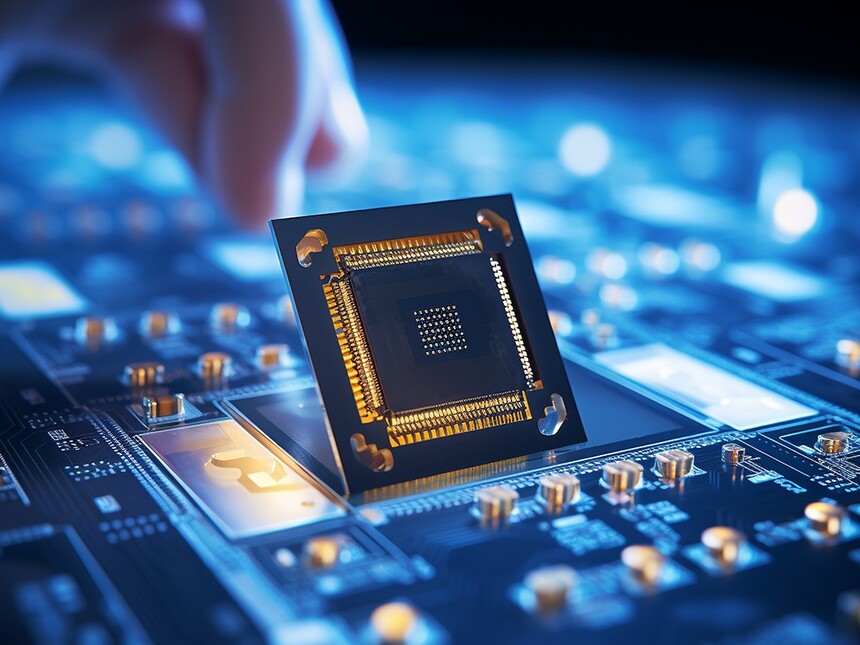|
What are IC Electronic Components?What are IC Electronic Components?Integrated circuits (ICs), commonly known as chips, are miniaturized electronic circuits that have been etched onto a tiny piece of silicon. These circuits consist of numerous transistors, resistors, capacitors, and other electronic components that are interconnected to perform specific functions. ICs are fundamental building blocks in modern electronics, enabling the creation of complex and powerful devices in increasingly smaller packages.
History of Integrated Circuits The concept of integrating multiple electronic components onto a single silicon chip was first proposed in the late 1950s. However, it was in 1958 that Jack Kilby of Texas Instruments and Robert Noyce of Fairchild Semiconductor independently invented the first integrated circuit. This revolutionary invention paved the way for the miniaturization of electronics and the subsequent explosion of the semiconductor industry. Types of Integrated Circuits (ICs) Integrated circuits can be broadly classified into two types: analog and digital. Analog ICs: These are designed to process analog signals, which are continuous and vary smoothly over time. Examples of analog ICs include amplifiers, comparators, and analog-to-digital converters. Digital ICs: These are designed to process digital signals, which represent discrete values (usually binary 0s and 1s). Digital ICs include microprocessors, memories, and logic gates. Within these broad categories, there are numerous specialized ICs designed for specific applications such as audio processing, data conversion, power management, and more. Manufacturing Process The manufacture of integrated circuits is a highly complex and precise process that involves multiple steps: Silicon Wafer Preparation: The process begins with a pure silicon wafer, which serves as the substrate for the integrated circuit. Deposition: Thin layers of various materials, such as silicon dioxide, polysilicon, and metal, are deposited onto the wafer using chemical vapor deposition (CVD) or physical vapor deposition (PVD) techniques. Photolithography: This step involves coating the wafer with a photosensitive material, exposing it to ultraviolet light through a patterned mask, and then developing the pattern. This creates a precise template for the subsequent etching or deposition steps. Etching: Using chemical or plasma etching techniques, the unwanted material is removed from the wafer, leaving only the desired pattern of conductors, insulators, and semiconductors. Ion Implantation: This process introduces impurities (dopants) into the silicon wafer to alter its conductivity, creating regions of different electrical properties (e.g., p-type and n-type semiconductors). Metallization: Conductive metal layers are deposited and patterned to form interconnects between the various components of the circuit. Passivation: A protective layer is deposited over the circuit to prevent mechanical and chemical damage. Testing and Packaging: The completed wafers undergo rigorous testing to ensure their functionality. Once tested, the individual chips are cut from the wafer and packaged for use in electronic devices. Applications of Integrated Circuits Integrated circuits are ubiquitous in modern electronics, finding applications in almost every conceivable electronic device. Some examples include: Computers: Microprocessors, memories, and other digital ICs are the brains of computers, controlling their operations and storing data. Communications: ICs enable high-speed data transmission and reception in devices like smartphones, routers, and modems. Consumer Electronics: From televisions and audio equipment to gaming consoles and cameras, ICs provide the necessary processing power and functionality. Industrial Automation: ICs are essential for controlling machinery, sensors, and actuators in automated manufacturing processes. Medical Equipment: Precision analog and digital ICs are used in medical imaging, patient monitoring, and diagnostic equipment. Future of Integrated Circuits As technology continues to advance, the future of integrated circuits looks brighter than ever. With the increasing demand for smaller, faster, and more energy-efficient devices, researchers are constantly pushing the boundaries of IC design and fabrication. Some emerging trends include: 3D Integration: Stacking multiple layers of silicon wafers vertically to create denser and more powerful circuits. Neuromorphic Computing: Developing ICs that mimic the structure and function of the brain, potentially revolutionizing artificial intelligence and machine learning applications. Flexible Electronics: Creating bendable and stretchable ICs for wearable devices and other novel applications. Conclusion Integrated circuits (ICs) are the unsung heroes of the modern electronic age, enabling the creation of devices that are smaller, faster, cheaper, and more reliable than ever before. From smartphones and computers to medical equipment and industrial automation systems, ICs play a crucial role in virtually every aspect of our lives. As technology continues to evolve, the possibilities for innovation in the field of integrated circuits remain endless. |






